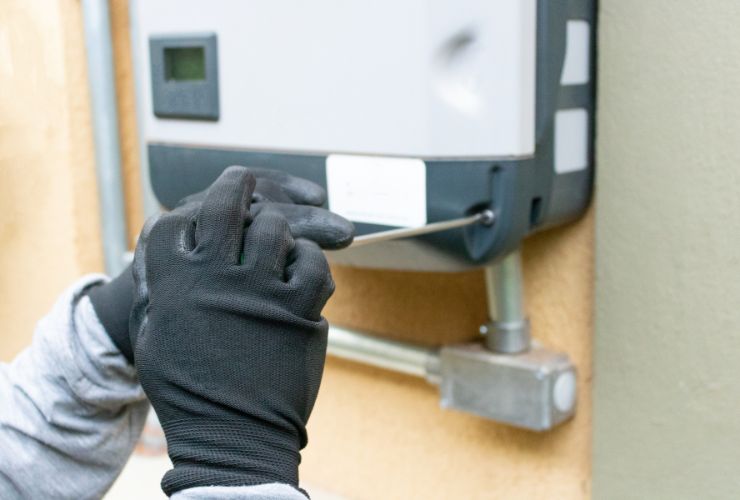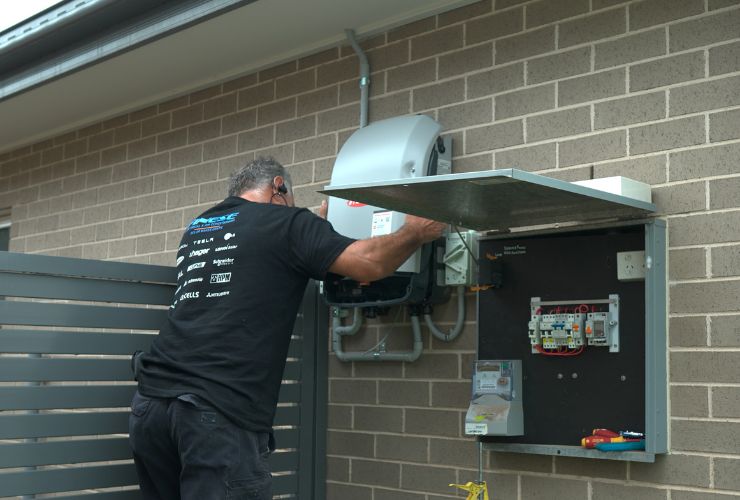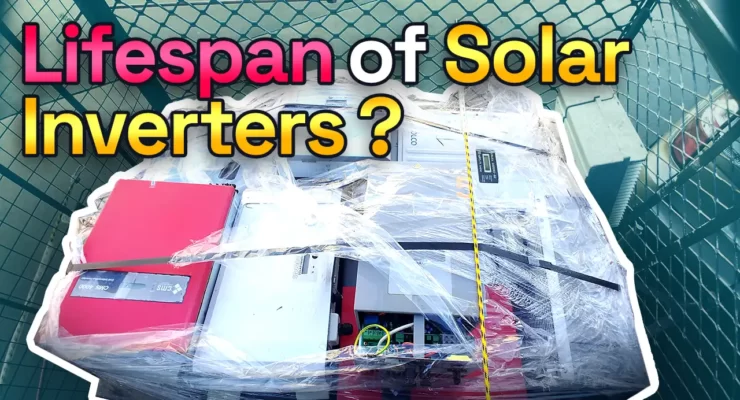Fast read
Controlling your solar inverter's temperature in Australia, where high temperatures are common, is essential for efficient operation and durability. Inverters work best in a certain temperature range. Going outside this range can lower performance or cause shutdown.
Factors like sunlight exposure, inverter type, airflow, and installation location influence temperature. To maintain the inverter at the correct temperature, put it in a shaded area with sufficient airflow. If necessary, use additional cooling methods.
Maintaining the correct temperature for your solar power system is important. This will boost power output and improve the efficiency of your solar energy investment.
What should I do to control my solar inverter temperature?
It’s important to control the temperature of your solar inverter to make sure it works well and lasts a long time. In Australia, it’s important to keep your inverter cool. This will ensure that it works well and lasts a long time, especially in hot weather.
This guide will discuss the importance of controlling temperature for solar inverters. It will also cover the factors that can affect their temperature. Additionally, it will provide tips on how to ensure your inverter remains at the correct temperature.
The significance of temperature control
Solar inverters play a central role in a photovoltaic (PV) system, as they are responsible for converting the direct current (DC) generated by solar panels into alternating current (AC) suitable for use in your home or for feeding back into the grid. This process involves intricate electronic components and semiconductors that are sensitive to temperature variations.
Inverters work best in temperatures below 30 degrees Celsius. Some high-quality models can still perform well up to 40 degrees. However, as temperatures rise beyond this range, the inverter begins to experience a phenomenon known as “derating.”
Derating means lowering the power output of the inverter to prevent overheating and damage to its internal parts. If it gets too hot, around 50 degrees Celsius, the inverter might turn off for safety reasons.
It is important to operate your PV system highly efficiently. This will help maximise power output and ensure the inverter lasts a long time.
Controlling the temperature of the system is also crucial for its high performance. High temperatures can stress the inverter’s parts and make it more likely to fail early. Thus, it’s essential to adopt measures that help regulate the temperature of your inverter to prevent overheating.

Key factors affecting inverter temperature
Several factors can influence the temperature of your solar inverter:
- Exposure to sunlight: Inverters should ideally be shielded from direct sunlight. Solar radiation can significantly increase the core temperature of the inverter, particularly during the scorching Australian summers. Direct exposure to sunlight can push the inverter’s temperature beyond its optimal operating range, resulting in reduced efficiency.
- Inverter type: Inverters with passive cooling rely on heat sinks and natural airflow, while those with active cooling incorporate cooling fans. Each type requires specific considerations to maintain the appropriate inverter temperature.
- Airflow and clearance: Adequate airflow is crucial for regulating inverter temperature. Proper ventilation around the inverter is necessary to prevent heat build-up.
- Garage installation: Many homeowners choose to install their inverters in garages. Make sure the garage has enough ventilation, even if it offers some protection from sunlight. Leaving windows or doors open can improve airflow and cooling, reducing the inverter’s temperature.
- Additional cooling measures: In some instances, individuals have taken creative measures to enhance cooling around the inverter. This might involve using PC fans or desk fans strategically placed to improve airflow. While not a standard practice, such methods can be effective in managing temperature.
1. Ideal installation location
One of the fundamental importance of temperature control for your inverter is its installation location. Most inverter manuals emphasise the importance of shielding the inverter from direct sunlight. Exposure to sunlight can cause the inverter’s core temperature to rise significantly above the ambient temperature. This, in turn, can lead to derating, reducing the inverter’s efficiency during hot summer months.
To prevent overheating, place your inverter in a shaded spot like a south-facing wall or a well-ventilated garage. This protects the inverter from sunlight and keeps it cool for better performance.

2. Adequate airflow and clearance
Inverters have cooling systems to help get rid of the heat produced when converting DC power to AC power. To ensure these cooling systems operate effectively, maintaining adequate airflow and clearance around the inverter is essential.
For inverters with heat sinks, the flow of natural air over the heat sink facilitates passive cooling. Ensuring that there is enough space around the inverter for air to circulate is vital. Do not put anything near the inverter that could block airflow and make it overheat.
Some inverters employ active cooling mechanisms with built-in cooling fans. These fans help regulate the inverter temperature by actively moving air. However, it’s equally important to maintain clear airflow around the inverter, even when fans are present. Ensure that there are no obstructions and that the fans can perform their cooling function efficiently.
3. Garage installation considerations
Garages are commonly chosen for inverter installation because they offer protection from the weather. However, it’s crucial to remember that garages can become quite hot during the summer. To mitigate this, consider the following:
- Leave windows or doors open to promote increased airflow and cooling within the garage.
- Install the inverter in a location that minimises exposure to direct sunlight, even within the garage.
- Ensure the garage is well-ventilated to prevent heat build-up.
4. Additional cooling methods
In certain cases, homeowners have implemented creative cooling solutions to enhance inverter temperature management. While not standard practice, these methods can be effective in maintaining an ideal operating temperature:
- Placing PC fans or desk fans strategically to improve airflow around the inverter.
- Using thermal insulation or reflective materials in the installation location to reduce heat absorption.
Think carefully about any additional cooling methods. Keep an eye on them to ensure they do not disrupt the inverter’s function or cause safety issues.
Controlling the temperature of your solar inverter is a critical aspect of maintaining its efficiency and extending its lifespan. Given the high temperatures often experienced in Australia, following these strategies to manage inverter temperatures is essential.
To maintain the performance of your inverter, place it in a shaded area. Ensure there is enough space for air circulation. If necessary, provide additional cooling to regulate the temperature. This helps your solar panels work better and last longer, so you can get the most out of your investment.



